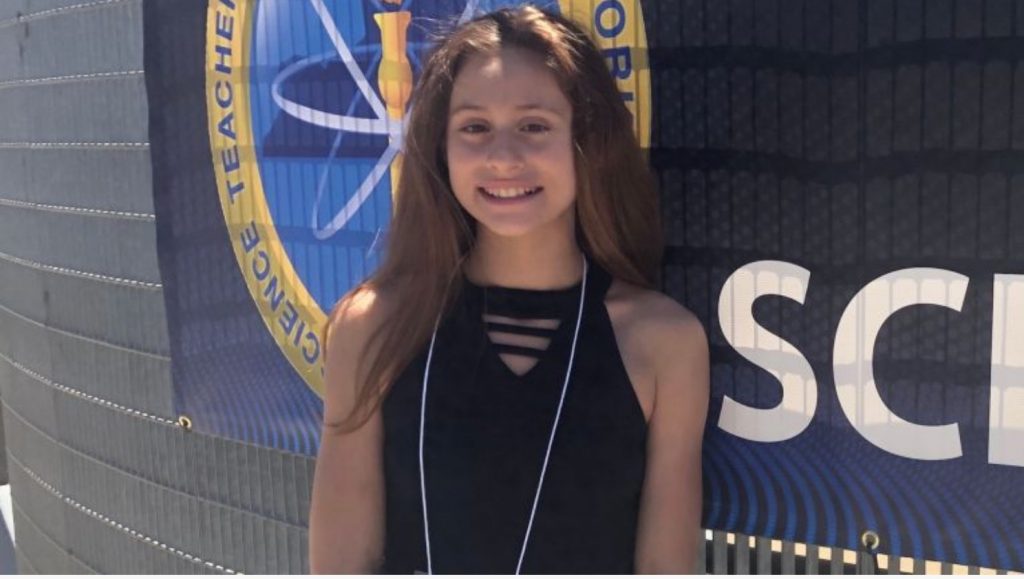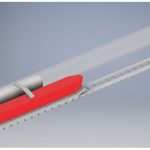
Caroline Crouchley, 13 year old designer of a simpler hyperloop
When the young are given the chance to design the future (the future, incidentally, that they will inhabit) where do they look? Well, the 2019 3M Young Scientists Challenge Winners have been announced giving us a chance to find out.
Caroline Crouchley, an eighth-grader at Garden City Middle School from Garden City, New York, developed a sustainable method of public transportation that eliminates the need for a diesel engine or electric motor in trains. She took and improved on the hyperloop design of Tesla inventor, Elon Musk. Impressive enough in itself, but consider her reasoning:
“It has a simpler design, can be more easily constructed, can utilize the existing footprint of rail right of ways, and is cheaper to build,” She would like to see the hyperloop concept move forward but sees her design as an intermediate step that could realistically happen earlier.

Image courtesy Caroline Crouchley
“What is needed are gradual steps. I see my project as a more practical leap right now from where we are to where we need to go. My proposed design offers high-speed train travel that could be developed sooner and at a much lower cost. It makes more sense as it uses existing rights of way. I am a big supporter of the hyperloop, but I see my project as a more feasible opportunity right now.”
Here is a 13 year old who instinctively recognises that in approaching the future we should go for ‘Continual Adaptation’.
Three of the first four place getters chose to focus on problems relating to infrastructure. In addition to Caroline’s work, we have:
In third place, Jordan Prawira, an eighth-grader in California, invented a wind turbine inspired by hurricane formation concepts to improve the performance and efficiency of current wind turbines.
In fourth place, Camellia Sharma, a seventh-grader in Virginia, developed a water leakage detection system to identify underground water leakage and reduce the estimated 48.6 billion cubic meters of water lost annually through current distribution systems worldwide.
They didn’t design grand new infrastructure projects, using old technology, costing billions of dollars and taking unknown decades. Quite the converse! They saw that the way to the future is by ‘Continual Adaptation’.
Follow up.
The achievements of these young scientists are impressive, but equally so are problems they chose to examine and the ideas they developed – from a solution to mitigate earth’s rising temperatures by planting hydroponic trees in the ocean, to a predictive model using machine learning and neural networks to predict and prevent the instances of forest fires, to a new approach to carbon capture that extracts carbon dioxide from the air and recycles it into natural volcanic rock.
If you would like more information and to be encouraged by their new ideas, their focus and their practicality (well worth emulating), go here.

Recent Comments